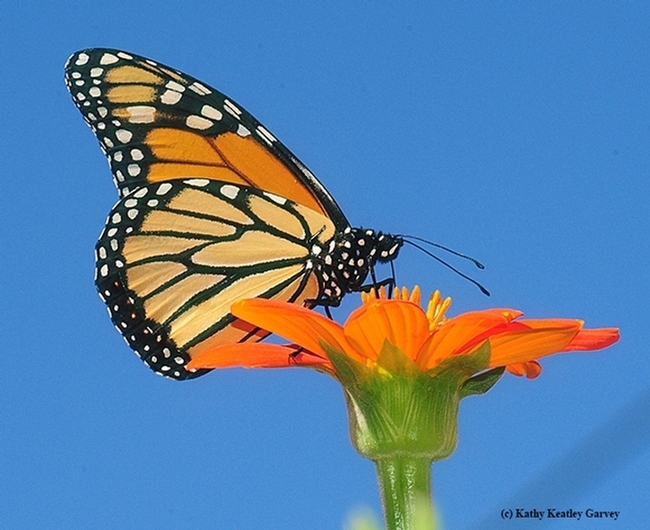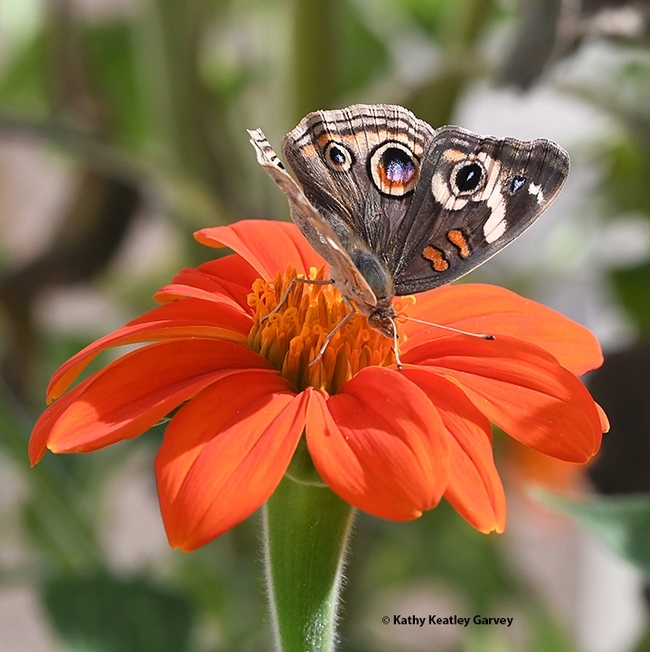
If you live in Alabama, Georgia, Kansas, Nebraska, Oklahoma or Texas, the United States Geological Survey (USGS) wants you to collect dead butterflies and moths and mail the specimens to its office in Lawrence, Kansas for its Lepidoptera Research Collection (LRC).
"These specimens will help USGS scientists identify contaminants and environmental factors which may be contributing to the decline of insect populations," the agency related on its website. "Citizen participation will ensure enough specimens throughout the nation are available to answer research questions."
They're specifically looking at the "occurrence of antibiotics, pesticides, hormones, and mycotoxins in Lepidoptera."
Said Julie Dietze, the USGS scientist-in-charge of the project: "There are some questions that can't effectively be answered without help from a lot of people. It's what makes citizen science so special and valuable. Collections like this one are important because they have the potential to provide scientists now, and 20 years from now, access to specimens. Without the specimens it will be far more difficult to answer questions related to contaminants and environmental health."
The deadline to submit the specimens is Nov. 1, 2023. However, the project, launched in April of 2023, may continue into 2024, according to the website. See more information or contact Dietze at juliec@usgs.gov. In addition, you can follow USGS on Facebook @USGeological Survey; YouTube @USGS; Instagram @USGS; or Twitter (now known as "X") @USGS.??
Chang Che of The New York Times published a piece on the project on July 27 and interviewed butterfly guru Art Shapiro, UC Davis distinguished professor emeritus, on the declining butterfly populations. Shapiro, who retired July 1, 2023, has been monitoring the butterfly populations of central California since 1972. He maintains a research website at https://butterfly.ucdavis.edu.
"Insects, the ballast of food chains and essential pollinators that help nourish entire ecosystems, are in rampant decline across the world," wrote Che, who mentioned that the U.S. monarch population alone has decreased 90 percent over the past 20 years. Scientists say that amounts to 900 million monarchs, Che pointed out.
Shapiro says the drop is likely a result of such factors as climate change, habitat loss and pesticides. He told Che that the sharp decline coincides with the implementation of neonicotinoids in agriculture. "And the same coincidence — if that's what it is — has been observed in the U.K. and in Europe.”
"Dr. Shapiro noted that recent heat waves had probably killed many of the butterflies people would be sending in," Che wrote. "He was supportive of 'anything that sheds some light on what is actually going on' with butterflies. But he cautioned that the study would most likely shed light on insect-specific factors of population decline such as pesticides, as opposed to environmental ones like heat waves and habitat loss."
Meanwhile, Shapiro told us today that "I am getting odd e-mails as a result of that NYT article. People are assuming I'm a Monarch maven. I'm not!"
Attached Images:

